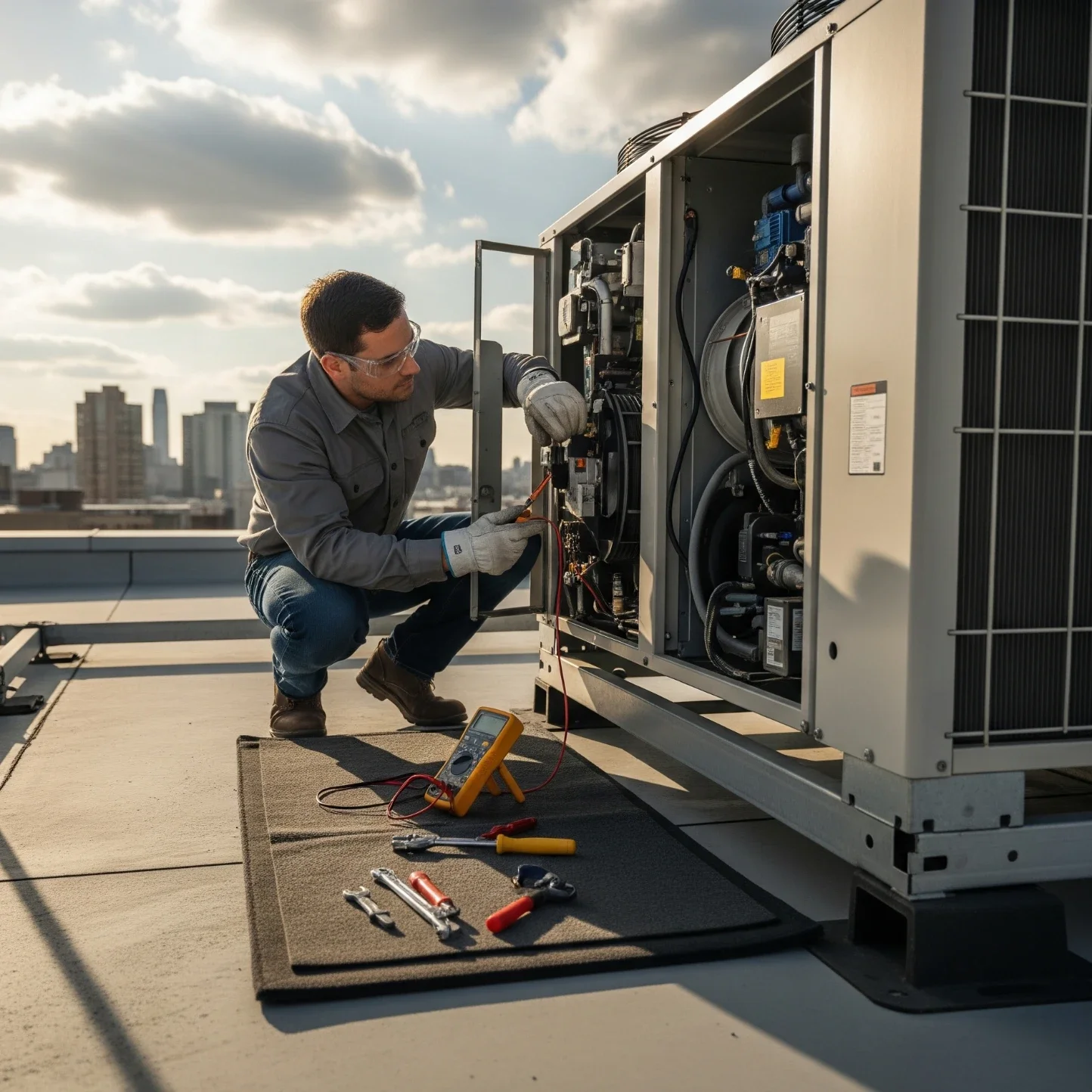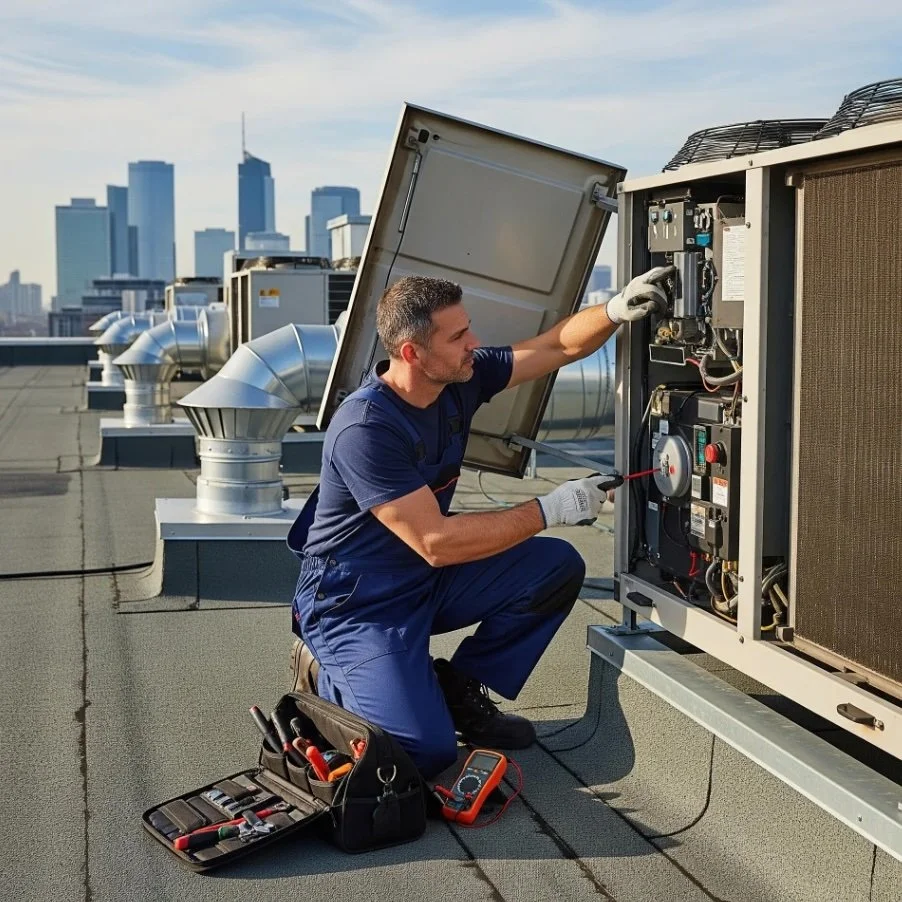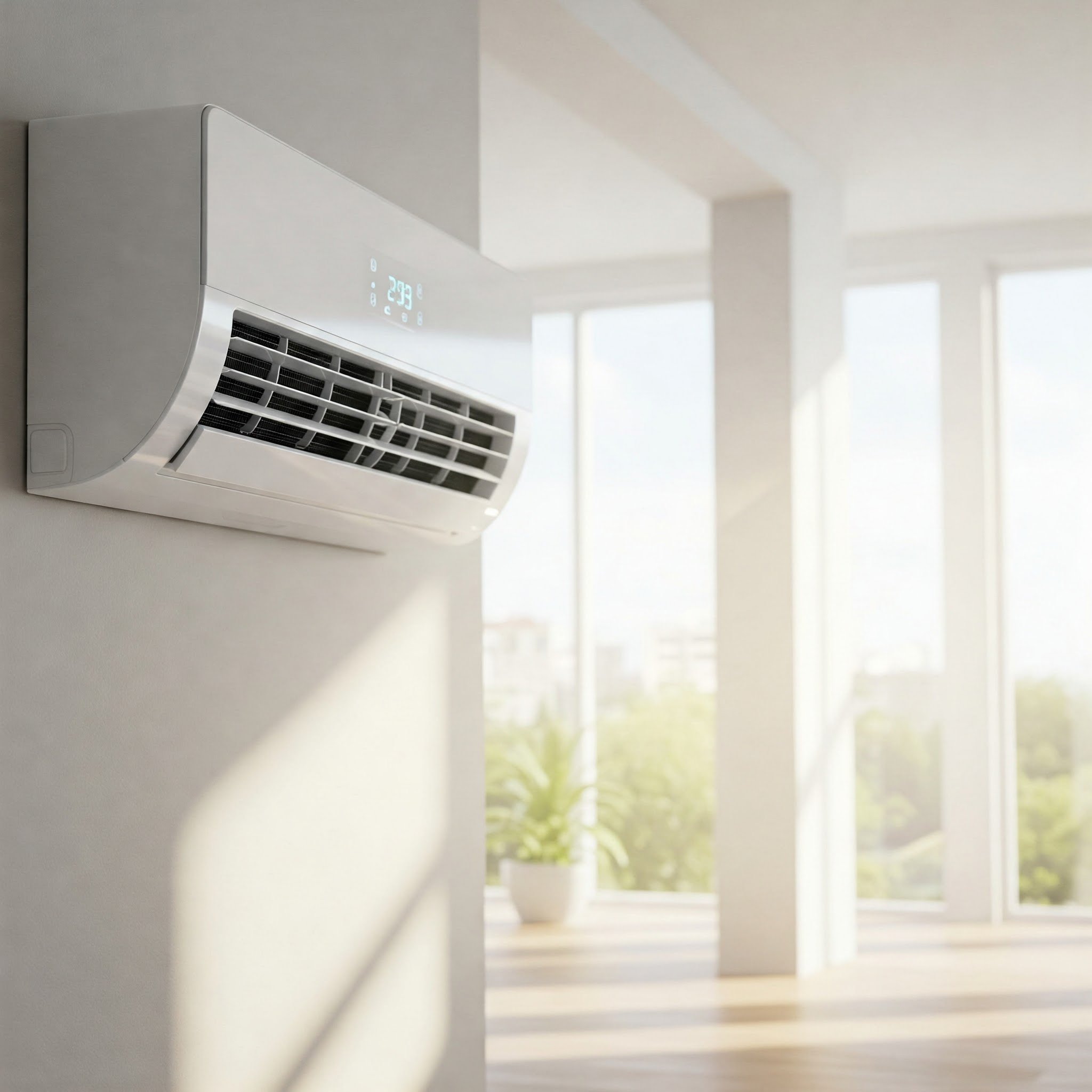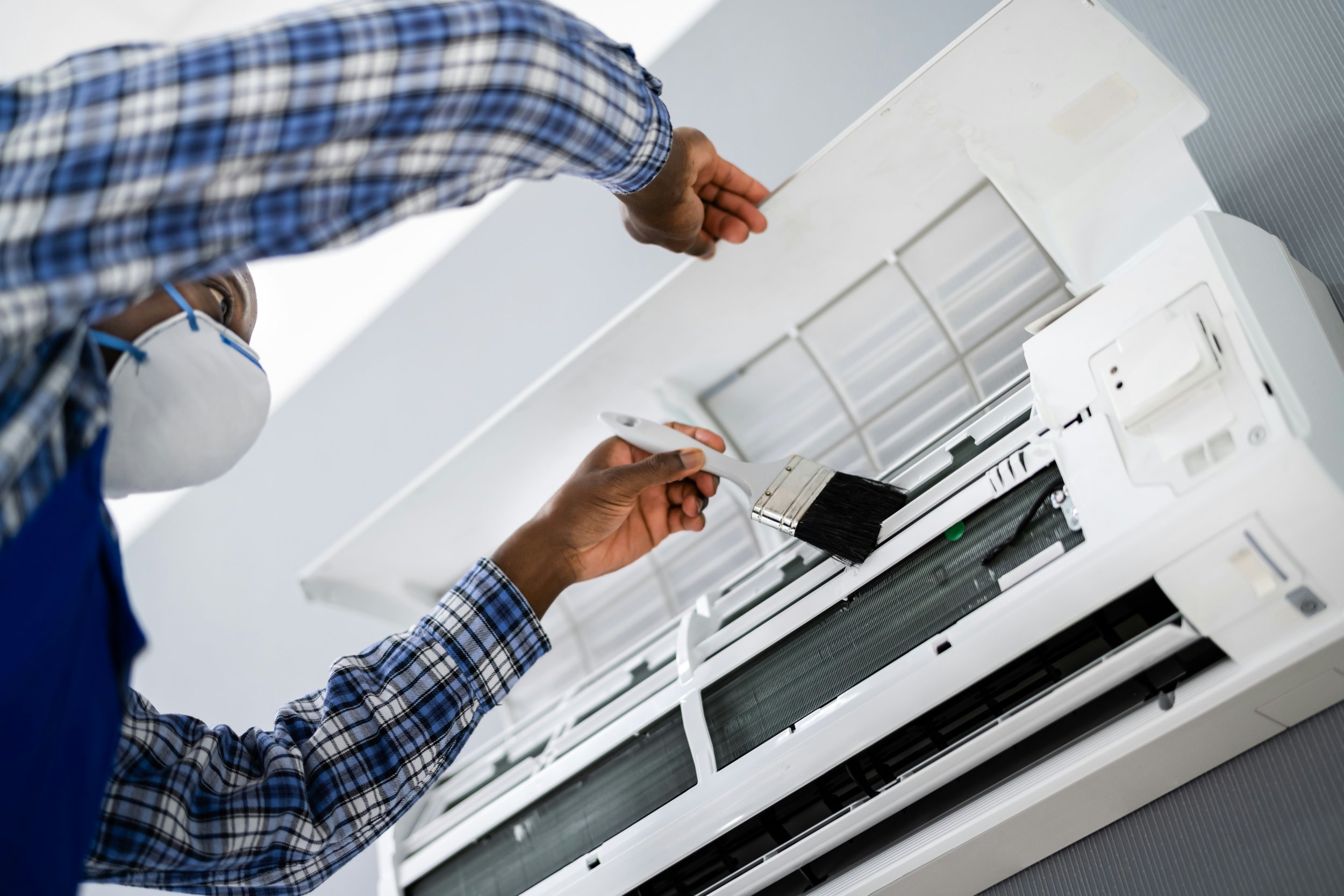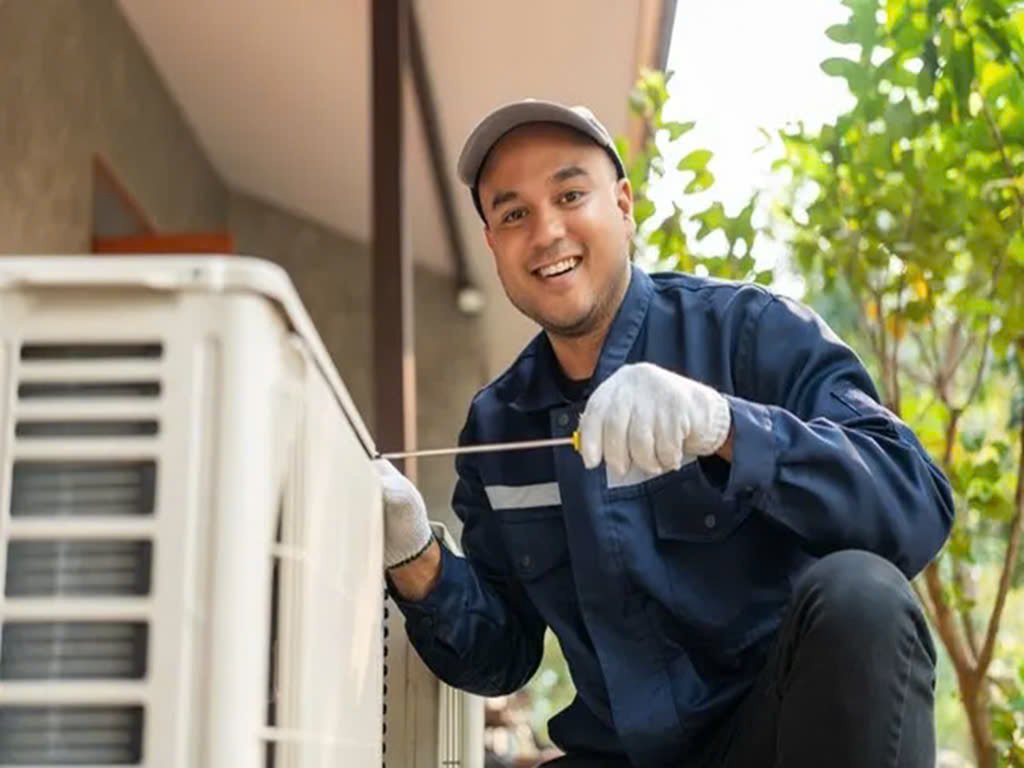What Does HVAC Mean? Heating, Ventilation, Air Conditioning Systems, Air Quality & How HVAC Differs From AC Units
HVAC explained: What does HVAC mean? HVAC stands for heating, ventilation, and air conditioning. Learn about your HVAC system and indoor air quality.
Walk into a house on a January morning and it feels warm, the air doesn’t smell stuffy, and your eyes aren’t burning from dryness. That’s not an accident. That’s the HVAC system doing its job in the background so you barely have to think about it.
HVAC stands for Heating, Ventilation, and Air Conditioning. It’s the collection of equipment that heats and cools your home, moves fresh air through the space, and filters dust and other particles out of the air. Put simply: an HVAC system controls temperature, airflow, and indoor air quality so your home feels comfortable and livable year-round.
What HVAC Stands for and What a System Actually Does
The name tells you the three big jobs:
Heating – keeping your home warm during colder months
Ventilation – bringing in fresh outdoor air and moving stale air out
Air Conditioning – cooling and dehumidifying the air in hot, humid weather
An HVAC system doesn’t just heat and cool. A good system also:
Helps manage humidity so the air doesn’t feel swampy in summer or painfully dry in winter
Filters out dust, pollen, pet dander, and other particles
Circulates air so temperatures feel more even from room to room
When people say “my HVAC system” or “my heating and air,” they’re talking about the whole comfort system: the furnace or heat pump, the AC unit, the blower, the ductwork, and the thermostat working as one.
Key components of a typical HVAC system
Every house is a little different, but most modern HVAC systems share the same basic parts. You don’t need to become a technician, but it helps to know what you’re looking at when someone is in your basement or out by the condenser.
Thermostat - This is the control center on your wall. You set your preferred temperature, and the thermostat tells the heating or cooling equipment when to turn on and off. Smart thermostats add schedules, apps, and learning features, but the basic idea is the same.
Indoor unit (air handler or furnace)- This indoor cabinet holds the blower and coil and pushes air through the home. It can be a gas or electric furnace, or an air handler paired with a heat pump or central AC.
Outdoor unit (AC or heat pump) - The box outside with the fan on top is either an air conditioner or a heat pump.
In cooling mode, it sends the heat from inside your home out into the outdoor air.
A heat pump can also work in reverse to bring heat from outside into the home in winter.
Ductwork and vents - In a central HVAC system, ducts are the metal or flexible tubes that carry air to and from each room. Supply vents blow conditioned air into the space; return vents pull air back to be filtered and conditioned again.
Air filter - Somewhere in the return duct or air handler you’ll find the air filter. This is your first line of defense against dust, hair, and other particles. A clean filter protects the equipment and helps improve indoor air quality.
Condensate drain - When your air conditioner or heat pump cools the air, it pulls moisture out of it. That water drains away through a condensate line. If this gets clogged, you can see leaks or water around the indoor unit.
All these pieces work together as one HVAC system. If one part is dirty, blocked, or failing, you usually feel it as hot and cold spots, strange noises, or higher energy bills.
How HVAC Systems Work: Heating, Cooling, and Airflow
You don’t need to understand every nut and bolt, but a high-level picture helps you talk with a pro and make better decisions.
Heating
In a traditional furnace, burners or electric elements warm up a heat exchanger. The blower fan pushes room air across that hot surface and sends the warmed air into the ductwork and out the vents.
A heat pump works differently. Instead of burning fuel, it moves heat. In heating mode, it pulls low-temperature heat from the outdoor air and transfers it indoors using a refrigeration cycle. It may sound odd, but there’s heat outside even on cold days, and modern heat pumps are designed to use it.
Cooling
Cooling is basically heating in reverse. An air conditioner or heat pump:
Pulls warm indoor air across an evaporator coil.
Refrigerant inside that coil absorbs heat from the air.
The refrigerant carries that heat outside to the condenser, where a fan and coil release it into the outdoor air.
As air passes over the indoor coil, it loses both heat and moisture, which is why AC helps with both temperature and humidity. A blower fan then sends that cooled air through the ducts and out the vents.
Main Types of HVAC Systems for Homes
Not every home uses the same setup. When people talk about “what HVAC system is right for me,” they’re usually comparing a few common types.
Split System (Furnace + AC)
This is one of the most common setups in North America:
Furnace inside, usually in a basement, attic, or closet
AC condenser outside
Shared blower and ductwork
It’s a good fit for areas with cold winters and hot summers where natural gas is available.
Heat Pump System
A heat pump can both heat and cool your home. In summer it works like an AC. In winter it reverses and pulls heat from the outdoor air.
Great for mild to moderate climates
Can be paired with a small backup furnace or electric heat for very cold snaps
Ductless Mini-split
A ductless system uses one or more small indoor units mounted on the wall or ceiling and a compact outdoor unit.
No large ductwork
Great for additions, older homes without ducts, or rooms that are hard to keep comfortable
Allows different temperatures in different zones
HVAC vs AC: What’s the Difference?
People often use “HVAC” and “AC” as if they mean the same thing, but they don’t.
HVAC is the broad term for the whole comfort system: heating, ventilation, and air conditioning.
AC or an AC unit specifically refers to the part that cools and dehumidifies the air.
You might have:
A window AC in a bedroom, which is cooling only—not a full HVAC system.
A central AC system tied to a furnace and ductwork, which is part of a complete HVAC system.
So every AC unit is part of “air conditioning,” but not every cooling setup includes full HVAC with heating and ventilation built in.
Efficiency Basics: SEER, HSPF, AFUE & Thermostat Tips
When you shop for new heating and air conditioning equipment, you’ll see a lot of letters and numbers on the yellow labels. These ratings are there to give you a sense of how efficiently a system uses energy.
You’ll commonly see:
SEER (Seasonal Energy Efficiency Ratio) for cooling efficiency
HSPF (Heating Seasonal Performance Factor) for heat pumps in heating mode
AFUE (Annual Fuel Utilization Efficiency) for furnaces
You don’t have to memorize formulas. Think of these as miles per gallon for your HVAC system: in general, higher numbers mean less energy used for the same comfort, as long as the equipment is sized and installed correctly.
That last part matters. Even a high-efficiency furnace or AC unit can waste energy if:
It’s too big or too small for the home
The ductwork leaks or is poorly sized
The thermostat is in a bad location
A good contractor will perform a proper load calculation, check the ductwork, and help you choose a system that fits the house instead of just replacing “like for like.”
Thermostat Settings
There’s no single perfect number, but most households land somewhere in the mid-70s °F in summer and the upper 60s to low 70s °F in winter when people are home and awake. From there, you can nudge the setting up or down until it feels right, then use a programmable or smart thermostat to let the schedule adjust things automatically when you’re asleep or away.
Ventilation and Indoor Air Quality in Modern HVAC
Temperature is only one part of comfort. Indoor air quality (often shortened to IAQ) is the other big piece, and ventilation is at the heart of it—bringing in some fresh outdoor air and diluting stale air that holds odors, moisture, and pollutants.
Your HVAC system helps with IAQ through:
Air filters – trapping dust, hair, and some allergens; higher-rated filters (within what your system can handle) can help capture smaller particles.
Exhaust fans – in bathrooms and kitchens, pulling moisture and cooking fumes outside.
Balanced ventilation systems – in some homes, special equipment brings in outdoor air and exhausts indoor air in a controlled way.
You feel the difference when ventilation and filtration are working well. Cooking smells don’t linger for days, the house feels less stuffy, and people with allergies often breathe a little easier.
Simple HVAC Maintenance that Extends System Life
You don’t need to be handy to take care of a few basics that really help your HVAC system. A little attention can prevent big repairs.
Check and change air filters - Most homes benefit from checking filters every month and changing them every 1–3 months, depending on the type of filter, pets, and dust levels.
Keep the outdoor unit clear - Brush off leaves, grass clippings, and debris from around the outdoor AC or heat pump. Give it space so air can move freely through the coil.
Don’t block vents or returns - If a couch or rug is sitting over a vent, the air has nowhere to go. The room takes longer to warm up or cool down, and the system ends up running harder than it should. A quick rearrange can make a noticeable difference.
Schedule a yearly checkup - Having a tech - Centerline Mechanical or whoever you trust - look things over once a year is worth it. They clean the coils, make sure the refrigerant levels look right, and check the wiring and safety controls. Most of the big breakdowns people deal with start as small issues a tune-up would have caught.
With basic care like this, most central air conditioners and heat pumps stay reliable for 12 to 15 years, and many furnaces run 15 to 20 years or more. A little routine attention helps the whole system breathe easier, use less energy, and stay comfortable without much thought from you.
When to Call an HVAC Professional
You don’t need to call a pro for every little thing, but it’s wise to get help if you notice:
Rooms that never seem to reach the right temperature
Strange noises or smells from the furnace or AC unit
Short cycling—equipment turning on and off repeatedly
Spiking energy bills without a clear reason
That’s often the sign your HVAC system needs attention, a tune-up, or possibly an upgrade. A qualified technician can walk you through options, from simple repairs to choosing a new system that keeps your home comfortable and your air healthier for the long run.




